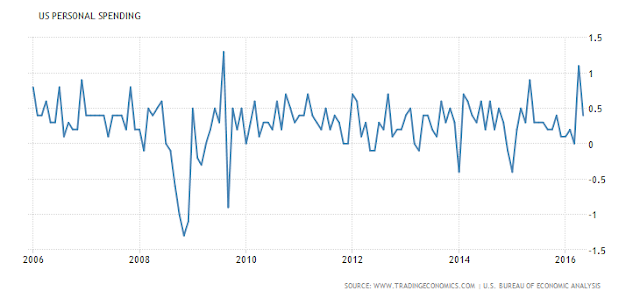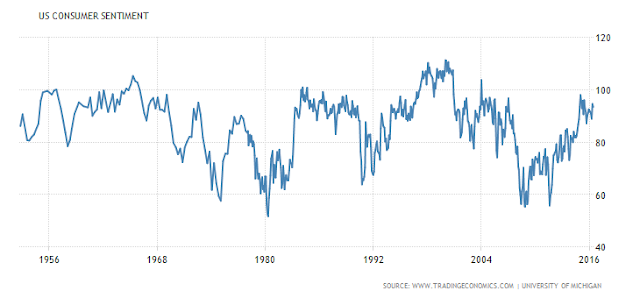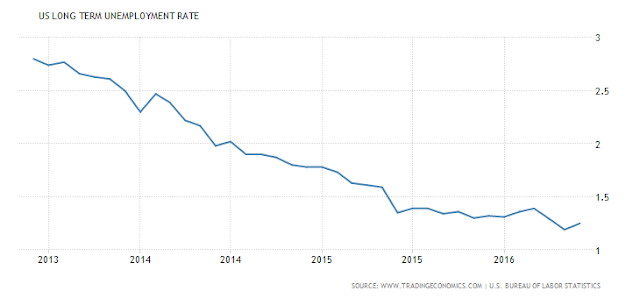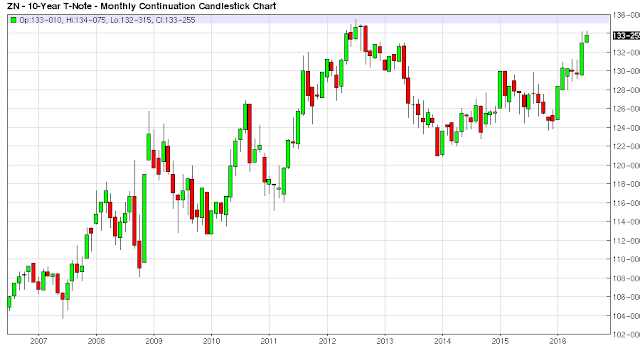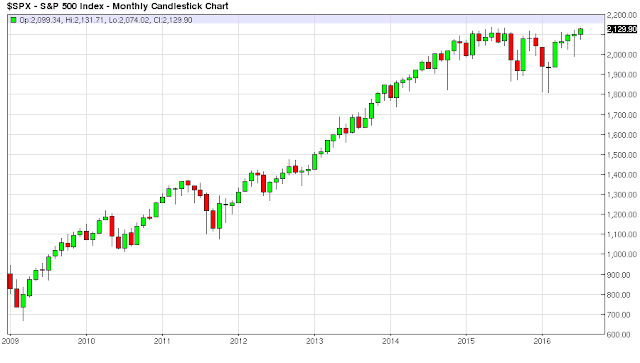By EconMatters
The Fed has argued that it is easier to respond to an upsurge in economic growth from here by staying conservative at the zero bound than it is to continue hiking and the economy takes a downturn from here. Actually this isn`t even correct, as they could very easily just cut rates again much easier than trying to chase runaway inflation.
But we think there are more dangerous precedents being set by the Federal Reserve right now. First of all, given the economic condition of the economy based on a broad spectrum of indicators, that if the Federal Reserve cannot normalize interest rates now, that the bar is so high for normalization, this is setting a bad precedent for Federal Reserve policy in a capitalistic economy. If you cannot raise rates under these conditions, then you are committing yourselves to never being able to normalize rates, and this has dire consequences, and the unintended consequences of this extreme monetary policy stance are far worse than any minor incremental benefits to be squeezed out from a continual zero bound approach.
The second precedent that is being set by this Federal Reserve is that US Monetary policy is being set by external factors outside their mandates which are inflation, employment and market stability and not Chinese stock market bubbles, a British Independence Vote, International Terrorism or the effects of a strong dollar on emerging markets.
The third poor precedent being set by the Federal Reserve is being so highly data dependent as to become “knee-Jerk” in responding to every little wiggle in the economic data. To the extent that in preparing for a rate hike which was long overdue the Federal Reserve overreacted to a Brexit vote (which will take two years to fully negotiate) and a poor employment report (after eight years of solid employment improvement and an overall tight labor market) which for all intents and purposes is probably at Full Employment Levels right now. This is the entire role of economists to take a high level or Bird`s Eye view of the economy and economic data. A responsible Federal Reserve cannot be this stop and start in regards to their economic outlook, their economic forecasts and embarking on a normalization rate hiking schedule.
It doesn`t matter whether the markets sell off, or the economy takes a slight downturn, or even goes into a slight recession from this point on a natural business cycle downturn, as remember we are at “emergency financial crash level” monetary policy measures. This was never supposed to be permanent, only a temporary measure to respond to emergency conditions in the credit markets after the financial crisis of 2007/08. It is unhealthy to run emergency monetary policy for 8 years. The most important role for the Federal Reserve should be in reestablishing a normal rate environment that resembles a healthy finance and capitalistic structure – which we can see is hurting the banking sector right now in regards to a flattening yield curve and bizarre low yield environment. The proper analogy is getting a patient back to normal after major surgery, the benefits derived from returning the patient to normal activities as opposed to enabled activities becomes self fulfilling and reinforcing in nature.
The fourth bad precedent is that the United States has always been a leader as the strongest capitalistic, free market society in the world. We are not Japan, China, or Europe and the more we resemble their dysfunction with overly intrusive central bank intervention in financial markets the worse off we become – this dysfunction feeds off itself in a growth draining manner. We need to be setting the example in terms of normalizing monetary policy, not following the negative interest rate black hole paradigm that is highly deflationary and growth stunting in nature. You have to respect capital – and ZIRP is the antithesis of respecting capital and has negative consequences for a capitalistic financial model.
The final precedent is that financial market stability is a Federal Reserve mandate whether explicitly or implicitly defined in their mission statement. And the level of poor positioning right now in financial markets given the economic conditions relative to current asset prices in multiple markets is off the charts and unprecedented in nature. The Federal Reserve is basically setting the necessary conditions for the biggest collapse in the Bond Markets, the bond markets were a bubble two years ago, now they have gotten so out of whack due to central bank insanity, that we are talking about multiple standard deviations from historical norms, all with a 2.2% core inflation rate – this just never ends well.
And moreover, the Fed is directly causing and acting irresponsible in setting this entire market crash scenario up because they fail to normalize interest rates in a timely manner, i.e., they keep stalling on every little excuse from a strong dollar to Chinese Investors bidding up stocks and running for the exits to a British self governing decision to a weak job`s report. None of this matters, these are all small picture items taken into the context of the bubble and respective tail risk that currently resides in the bond markets right now at current prices – it is unsustainable by any financial models. I have run them all and this is the real risk the Fed needs to be paying attention to regarding their FOMC meetings.
If we cannot raise rates and normalize interest rates now given these economic conditions (Just look at all these economic charts) in our economy, then we are committed to never being able to normalize monetary policy. So in essence just set the Fed Fund`s Rate at Zero and get rid of the Federal Reserve entirely, at that point they serve no useful function if we are permanently committed to the Zero Bound.
© EconMatters All Rights Reserved | Facebook | Twitter | YouTube | Email Digest | Kindle
The post It`s Time To Raise Rates appeared first on crude-oil.top.


